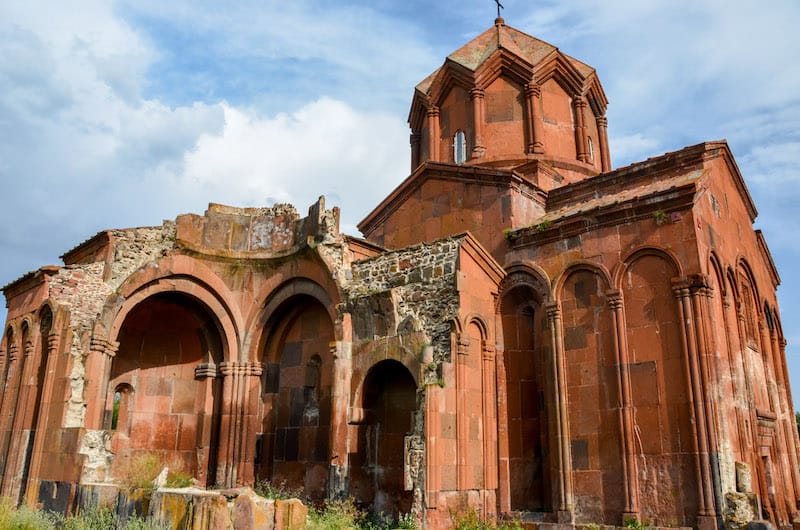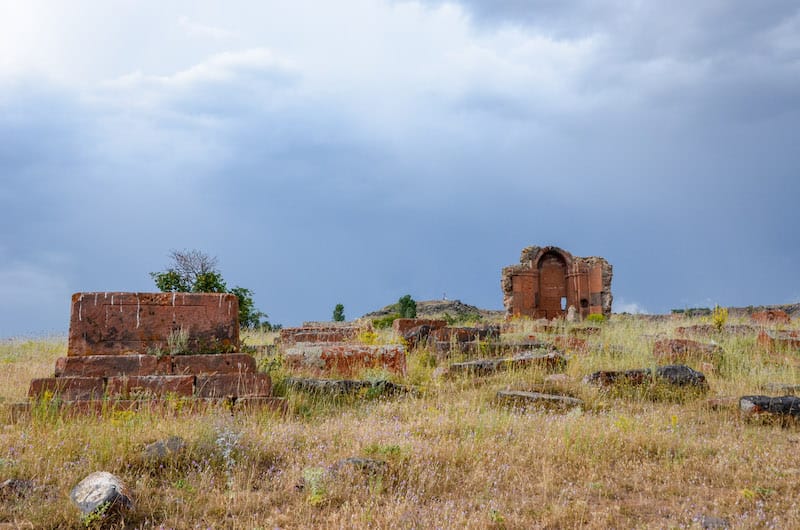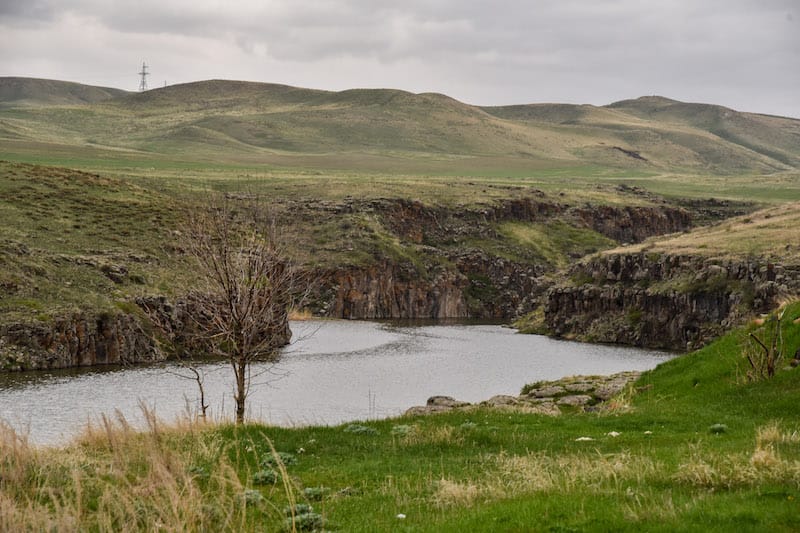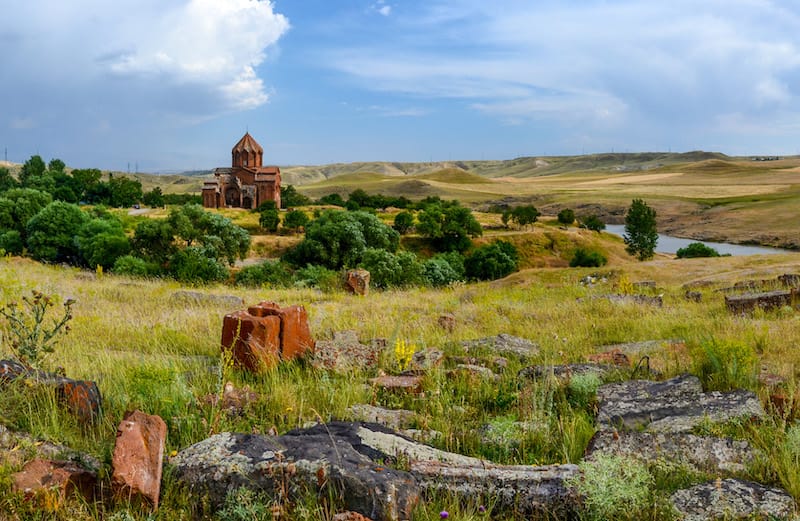Last Updated on October 12, 2025 by Aram Vardanyan
Looking for some cool things to do near Gyumri when visiting the city? One of the best places to visit is Marmashen Monastery, only a 20-minute journey outside of the city.
This guide details the history of Marmashen, my experience visiting the Shirak monastery, and some quick tips on how to get there from Gyumri.
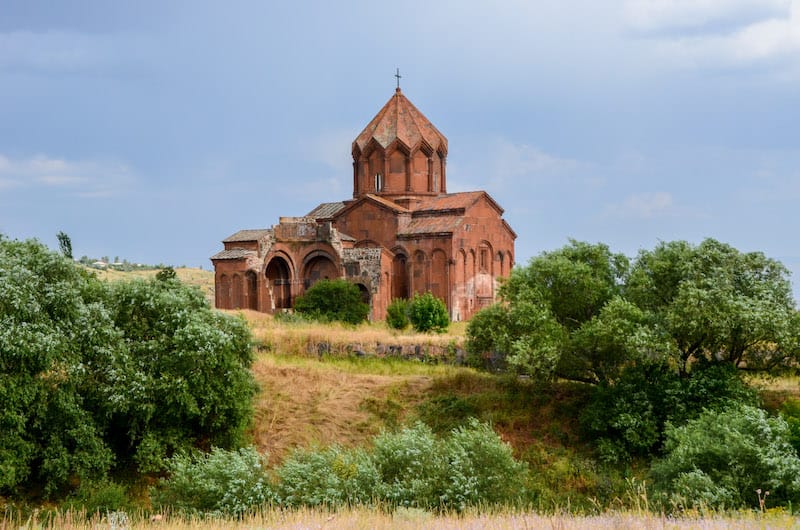
If you have any tips or questions, please leave them in the comments! Thanks!
Marmashen Monastery
A trip to Gyumri is not complete without visiting the breathtaking 10th-century monastic complex of Marmashen.
Located around 20 minutes northwest of the city center and easily accessible by car, this monastery sits beautifully on a shelf overlooking the left bank of the Akhurian River.
If you have seen the ancient Armenian capital of Ani before, you might see an architectural resemblance.
The churches at Marmashen are considered some of the finest examples of the “Ani school” of medieval Armenian architecture found in modern-day Armenia.
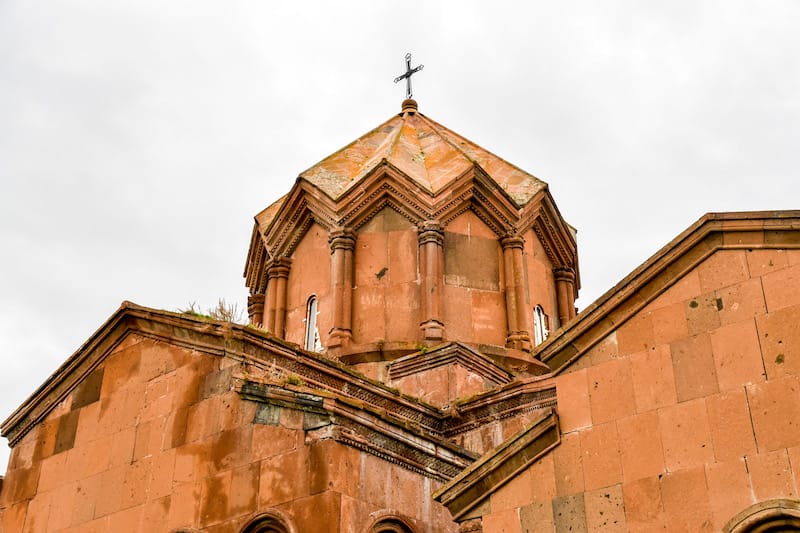
So if you haven’t had the chance to visit Ani, this is the next best thing! And you really aren’t very far from Ani, it is only 25 miles (40km) away as the crow flies.
You may be wondering about the name Marmashen. If you are familiar with the Armenian language, you know the word “marmar” means marble.
It is believed that the original name was Marmarashen, meaning “built of marble,” and over time it was turned into just Marmashen. The buildings are actually built of Armenian “tuff” stone, so the name might have actually meant that the quality of the stonework was high.
Be sure to walk around the entire complex as there are many things to see! The complex has 5 churches, ruins of other structures, and a cemetery.
The largest church is called the Kotoghike or Church of St. Stepanos, which is believed to have been completed in 1029 based on the date mentioned on an inscription on the southern wall.
The inscription says that Prince Vahram Pahlavouni constructed the monastery.
Vahram Pahlavouni (967-1045) was the commander-in-chief of the army of the Armenian kings of Ani. If you look at photos of the Ani Cathedral, you will see its close resemblance. This Armenian church was constructed only around 20-30 years later.
There is another inscription on the northern wall that explains the restoration of the monastery by Bishop Grigor Pahlavid and his brother Gharid in 1225.
Also included is information about the sponsors and what they donated to the monastery, including furniture, sacred vessels, vestments, fields, and vineyards.
Directly in front of the entrance of the main church are the remains of what used to be the entrance hall, narthex (or gavit), built in the 13th century.
All that is left are the 4 bases of columns that used to support the roof. It is believed that the graves of Vahram Pahlavouni and his family are located under the floor.
Barely a few meters to the left of St. Stepanos is the ruin of the St. Astvatsatsin Church. Its design is very similar, but just a bit smaller. According to historical accounts, the church was still standing until the mid-19th century.
On the other side, to the right of St. Stepanos, is the St. Petros Chapel. It is a very plain church with decorations only around the entrance.
Some say it is older than the other church buildings, but it cannot be confirmed.
Directly west and in front of the other 3 churches, you will see the foundations of a fourth circular church.
The design of the church is almost identical to the church of St. Sargis at Khtzkonk monastery in Western Armenia.
A fun fact about this church is that it is believed to have never actually been completed because there are no remnants of a roof or upper stones in the rubble of the ruins.
Finally, to the north, up on a hill, there are remains of a fifth church that was probably a small chapel. It is surrounded by a 19th-century cemetery, but if you look around, you may find fragments of medieval khachkars.

The monastery has experienced many years of hardship, so it is amazing we still have something to enjoy.
In 1064, the Seljuk Turks looted the monastery, and historical records show that there were earthquakes in 1139, 1275, 1668, 1926, and 1988.
Restoration works have been undertaken several times in the 20th century, and now what you see is what we have!
This area is also a favorite for locals to have picnics. Walking around the monastery, we were invited by locals to have khorovats barbecue and to dance to some live music.
It was definitely surprising because we were just expecting to see a monastery!
How to Get to Marmashen Monastery from Gyumri
Getting to Marmashen is actually fairly simple from Gyumri. You have a couple of options – taking a tour, driving your own car or a rental car, or taking a taxi.
Tour of Marmashen
If you’re looking for an organized tour of Marmashen, be sure to contact Station Tour in Gyumri. They can arrange a trip for you at an affordable price to the Monastery.
Click here to go to Station Tour’s Facebook page.
Taxi from Gyumri to Marmashen
Probably the easiest option for getting from Gyumri to Marmashen Monastery is to take a taxi.
Taxis are extremely affordable in Armenia, and taking one there will only cost you around 1200 AMD (just over $2) with GG Taxi from Gyumri city center.
Renting a Car in Armenia
Another alternative for getting around Armenia (and the best way, even though it is not the cheapest!) is to rent a car. There is plenty to see in Shira,k and Lake Arpi National Park is a favorite of ours! If you rent a car, you can head out that wa,y too!
Click here to check rental car rates in Armenia.
Have you ever visited Marmashen Monastery in Armenia? Let us know your tips in the comment,s and be sure to check out our other Shirak guides below!
More Shirak Travel Resources
- Yerevan to Gyumri road trip stops
- Yerevan to Gyumri train ride
- Amasia village in Shirak
- Lake Arpi National Park
- Things to do in Gyumri
- Where to stay in Gyumri


